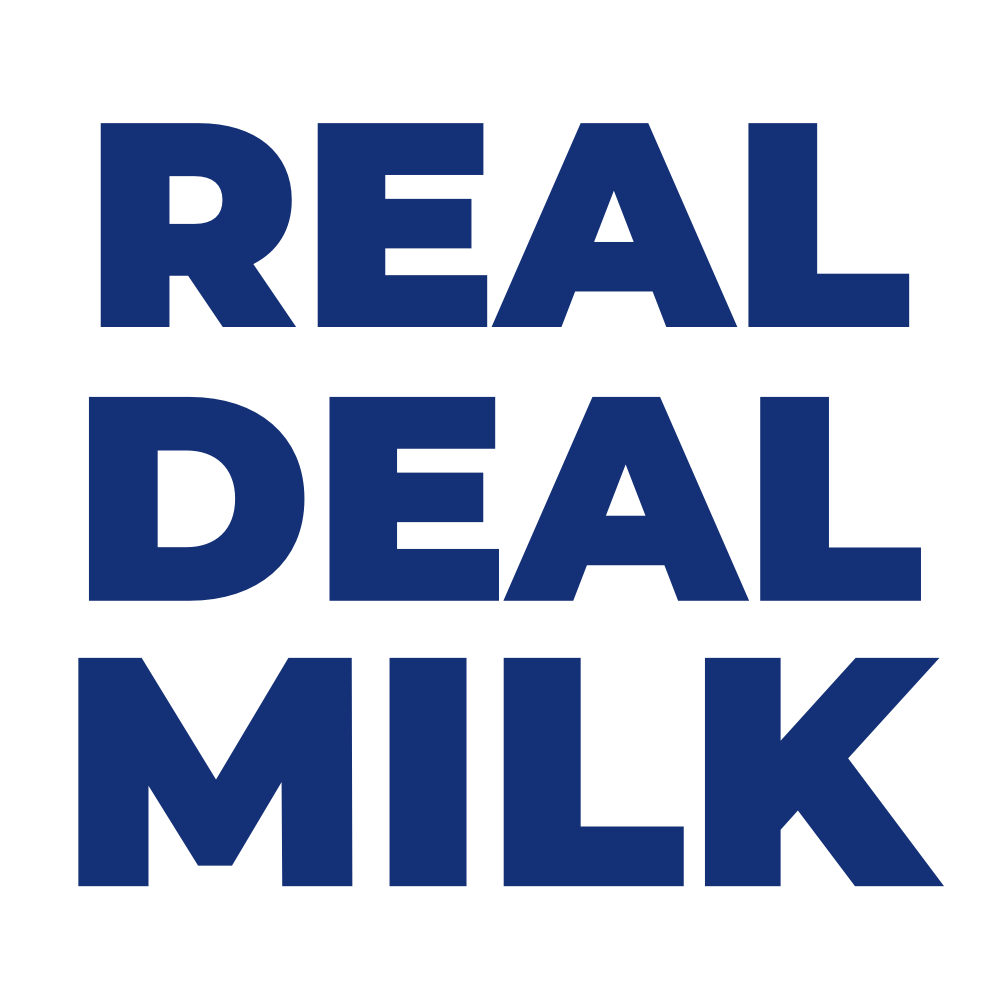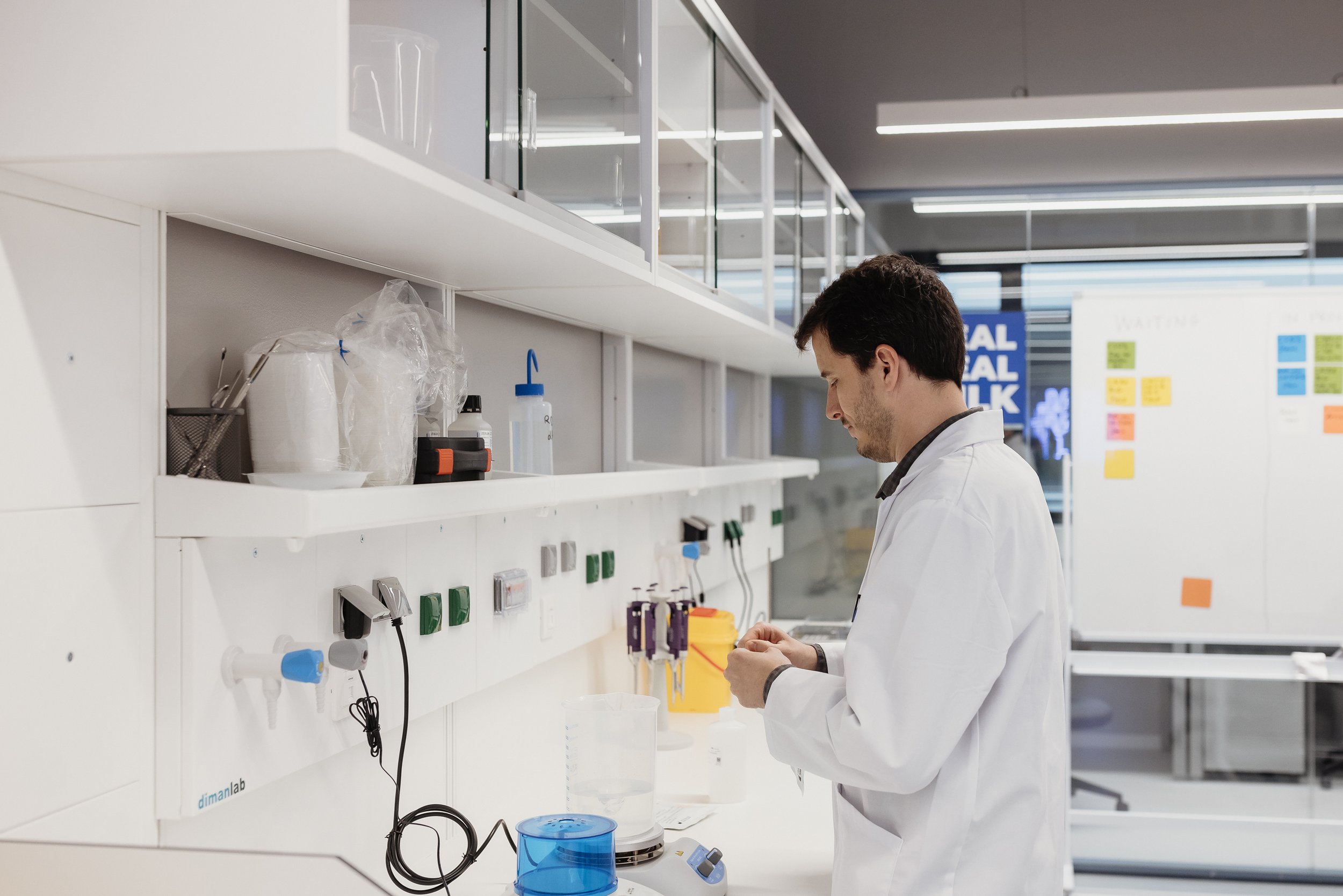
What is Real Deal Milk?
Real Deal Milk makes real milk, sustainably. Something cows haven’t yet mastered.
Traditional dairy farming has a devastating effect on the environment, draining resources from the planet and pumping back in greenhouse gases (GHG). An unfair exchange and one the cows certainly haven’t signed up to. Their only reward for producing large quantities of milk is a short and miserable life.
Despite the problems surrounding dairy farming, milk demand continues to rise. Currently, a whopping 6 billion of the 7.6 billion people in the world consume dairy products, and our population is growing. By 2050 the United Nations (2019) predicts the population size will reach 9.8 billion. As you can imagine, we’re going to need a lot of milk and a lot of significant changes.
Luckily technological advancements can guide the way to a more sustainable future. Real Deal Milk utilizes cellular agriculture to provide just the solution. With the ability to help tackle climate change and end animal suffering, while providing a lower cost, healthier product; it ticks all the boxes.
But what is cellular agriculture?
It swaps big animals for tiny cells.
No need to raise thousands of chickens just to be slaughtered or constantly impregnate cows solely to take their milk. An identical product can be manufactured from the comfort of a lab.
There are two main techniques used in the world of cellular agriculture: tissue-engineered and precision fermentation. Tissue-engineered production takes actual cells from an organism and grows them into the final product. Whereas precision fermentation modifies microbes to produce the desired proteins.
Real Deal Milk uses precision fermentation to produce casein and whey, the proteins found in milk. Yeast cells are given the genetic recipe for these proteins and off they go, acting as mini protein building machines to generate the proteins.
As well as ‘cellular agriculture’, you may hear some other names bopping about
Naming the new child of the agriculture industry has been a challenge. No one name has been committed to. So it’s worth keeping your eyes and ears peeled for words you may stumble upon, such as:
‘Animal-free’, ‘alternative protein’, ‘clean’, ‘cultured’, ‘cultivated’, ‘cell-based’, ‘cruelty-free’, ‘lab-grown’,
Each name gives off its own vibe. ‘Cultured’ sounds a bit more hippy, while ‘lab-grown’ brings back memories of school biology lessons. Despite the different names, they’re all pointing to the same technology.
So what does Real Deal Milk do?
Real Deal Milk sets out to protect the planet and save the cows.
We are watching the disastrous impacts of climate change playing out globally and GHGs have a leading role. Every step of milk production sends more out into the environment, even cows digesting their lunch manages to create GHGs. And it’s not just the air that dairy farming is polluting, waterways and wildlife habitats are damaged as well. Whereas yeast cells efficiency means they’re able to create milk proteins whilst releasing much less CO2 than a cow and there’s no polluting manure involved, immediately lowering the environmental impact of the milk.
Cattle also take up vast quantities of land and guzzle down a lot of water, both precious resources that could be used far more efficiently. Fortunately, keeping yeast cells alive requires less resources than sustaining the life of a 620kg animal (Schubert, H. et al. 2019).
No doubt cows would be more than happy to hand over the job of milk manufacture to yeast cells. Purely being seen as a milk-making machines, the life of a cow trapped within the dairy industry is tough. These poor living conditions could even result in serious problems for humans too, due to the potential spread of disease and overuse of antibiotics, resulting in pandemic risk and antibiotic resistance. The absence of cows helps to reduce these risks.
What will Real Deal Milk make?
With the manufacture of casein and whey mastered, the gates to the dairy industry are open.
Velvety ice cream for a hot summer’s day, mozzarella that melts over the entire pizza, rich butter that softens slowly on hot toast. The options are endless and now there’s no need to choose between your morals and your stomach, eating dairy can be a guilt-free experience.
Finally, the vegan dairy industry has a competitor that can win the respect of dairy lovers. Preserving the rich culture of dairy and allowing for our long-term relationship with this delicious food to progress into a more sustainable future.
This industry is set to BOOM.
Ten years from now, shock and disapproval will flash across faces as a friend confesses to drinking milk originating in a cow’s udder, whilst no one bats an eyelid that their cheese started its life in a yeast cell.
Just you wait…
References
Schubert, H. et al. 2019. Data-driven approach to using individual cattle weights to estimate mean adult dairy cattle weight. https://pubmed.ncbi.nlm.nih.gov/31554711/#:~:text=Results%3A%20Mean%20weight%20for%20adult,mean%20weight%20was%20620%20kg.
United Nations. 2019. World Population Prospects. https://population.un.org/wpp/Publications/Files/WPP2019_Highlights.pdf


